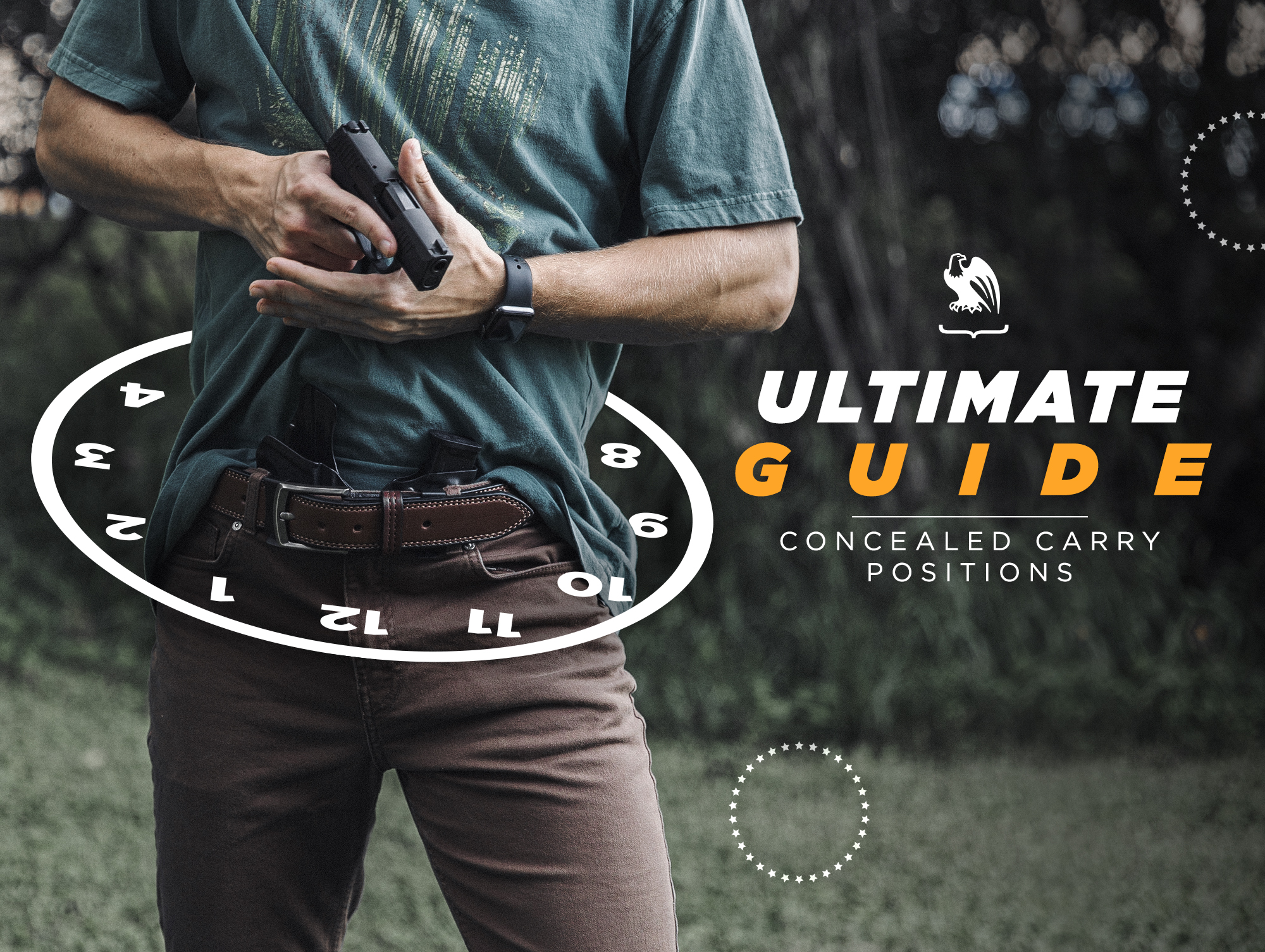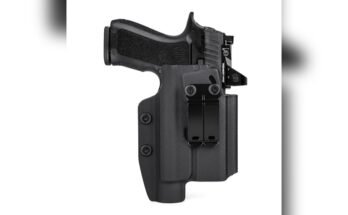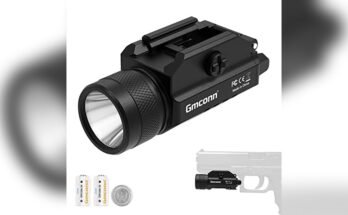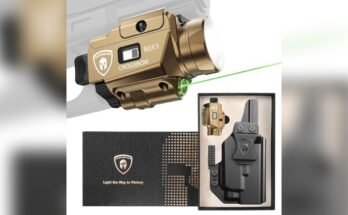I’ve spent years testing holsters, carrying daily, and coaching new carriers. The right spot to carry can change how safe, confident, and discreet you feel. Here is the short answer to What is the best holster position for concealment?: the best holster position is the one you can conceal well, draw from safely, and wear all day with your body type and wardrobe. For many, that ends up being appendix inside-the-waistband or strong-side hip inside-the-waistband. Let’s explore why, and how to choose what works for you.

Source: www.vedderholsters.com
How To Define “Best” For Concealed Carry
The best holster position balances four things: concealment, comfort, safety, and speed. You want low printing under normal clothes. You want a draw that is clean and repeatable. You want gear that does not poke, rub, or dig. And you want to handle the gun with the trigger protected at all times.
Think of it like picking running shoes. The right pair fits your foot, your stride, and your distance. Holster positions are the same. Your build, clothing, and day-to-day tasks matter more than trends.

Source: inside.safariland.com
Overview Of Common Holster Positions
Here is a clear look at the most used positions for concealed carry, with pros and cons from real use.
- Appendix IWB (AIWB, around 12:30–2 o’clock): Excellent concealment for many bodies. Very fast draw while standing. Good retention in crowds. Needs a good holster with a wedge and a proper belt. Seated comfort varies; adjust ride height and cant.
- Strong-Side IWB (3–4 o’clock): Classic choice. Hides well with a cover garment. Comfortable for long wear. Draw is natural. Can print when bending or with slim shirts.
- Behind-the-Hip IWB (4–5 o’clock): Conceals longer slides well. Comfortable when standing. Can be slower to draw. Watch for printing when leaning or if your shirt clings.
- Pocket Carry (front pocket): Great for small pistols only. Very discreet in casual wear. Slowest draw when seated. Must use a pocket holster that covers the trigger and keeps orientation.
- Shoulder Holster: Good with jackets. Comfortable when seated or driving. Slower draw with more movement. Needs careful muzzle discipline and a sturdy cover garment.
- Ankle Carry: Backup role. Useful when seated. Limited to small guns. Slow draw and not ideal for primary carry.
- Belly Band/Enclosed Elastic: Flexible placement for athletic wear. Good for light clothing. Reholstering must be deliberate. Choose designs with a rigid trigger guard insert.
Personal note: I used AIWB for most days due to speed and concealment. On long road trips, strong-side IWB felt better when sitting for hours. That simple switch kept me consistent and safe.

Source: www.therange702.com
Body Type, Clothing, And Everyday Movement
Your body shape and clothes drive concealment. A good setup matches your daily life, not just the mirror.
- Athletic or average build: AIWB often hides well with a wedge and wing. T-shirts can work with the right belt tension.
- Larger midsection: Strong-side IWB may feel better. Look for extra cant to tuck the grip into your line.
- Tall and slim: Behind-the-hip can hide taller slides. Add a light jacket or overshirt.
- Office dress: Shoulder holsters pair with blazers. AIWB with a tuckable clip also works.
- Active days: Belly band or AIWB with a secure belt offers stability. Stretch fabric shirts need a patterned or darker color to reduce printing.
I learned to do the “daily motions test.” Bend, reach, sit, tie shoes, and hug. If you print in those moments, adjust cant, ride height, or position.
Safety First: Trigger Coverage, Muzzle Direction, And Training
Concealed carry demands strict safety. Your holster must cover the trigger guard fully. It must not collapse when you reholster. The gun should not shift when you move.
- Use a rigid holster with solid retention.
- Keep fingers clear during draw and reholster.
- For AIWB, reholster slow and deliberate. Clear clothing. Tilt pelvis back. No rush.
- Practice with an unloaded gun first. Then use dry-fire reps with safe habits.
- Take a reputable class to build draw stroke and decision skills.
Expert trainers agree: a safe, consistent draw matters more than a tiny concealment gain. Pick the position you can run safely every time.
Comfort And All-Day Wearability
If it hurts, you will not carry. Small tweaks can turn a “maybe” into a favorite.
- Adjust ride height and cant a little at a time.
- Add a foam wedge for AIWB to rotate the grip inward.
- Choose a belt designed for carry to manage weight.
- Try different shirt fabrics. Heavier cotton or patterns hide better.
- Consider holster claw/wing features to tuck the grip.
I once thought a new gun would fix hot spots. It did not. A five-dollar foam wedge did. Simple, low-cost tweaks often solve comfort.
Gun Size, Holster Design, And Belt Choice
Your pistol, holster, and belt work as a system. Balance them.
- Micro and subcompact guns hide best in AIWB or pocket.
- Compact guns often ride well AIWB or strong-side IWB.
- Full-size guns need structure. Use a firm belt and a holster with good footprint.
- Kydex offers consistent draws and rigid trigger coverage.
- Leather can be comfortable but may soften. Check retention over time.
A stiff belt reduces printing by keeping the grip stable, which keeps your shirt from catching. That one change creates a cleaner line under clothes.
Real-World Scenarios: Standing, Sitting, And Driving
Life is not a range bay. Test your position in real tasks.
- Standing and walking: AIWB and strong-side IWB excel. They keep the gun stable and accessible.
- Seated at a desk: AIWB can press if ride height is too low. Slight height changes help. Shoulder rigs shine with jackets.
- Driving: AIWB or shoulder are fast to access. Strong-side IWB may be blocked by the seat belt latch. Consider a small cant change for road trips.
On a long commute, I moved my AIWB holster half an inch higher. That tiny tweak solved pressure and kept the draw clean with the seat belt on.
Testing Framework: How To Choose Your Best Position
Use a simple plan to find your best spot. Keep notes. Make one change at a time.
- Step 1: Start with AIWB and strong-side IWB. Most people land on one of these.
- Step 2: Check concealment in a bright mirror. Turn, bend, reach, sit.
- Step 3: Run 25 safe dry draws. Focus on grip, garment clear, and trigger discipline.
- Step 4: Wear for a full day. Note any hot spots or printing moments.
- Step 5: Adjust cant, ride height, belt tension, or add a wedge/claw.
- Step 6: Repeat. If still off, try behind-the-hip or a different holster shell.
Treat this like fitting a suit. Tailoring beats guesswork.
Legal And Ethical Considerations
Know the laws where you live and travel. Some places restrict methods or locations. Keep your permit and understand duty-to-inform rules. Store and transport firearms as required. Practice safe handling at all times. Seek vetted training and keep your skills current. Responsible carry protects you and those around you.
Frequently Asked Questions Of What Is The Best Holster Position For Concealment?
Is Appendix Carry Really Better For Concealment?
For many people, yes. AIWB tucks the grip into your body and hides well under simple shirts. It also offers a fast, consistent draw. Comfort depends on holster setup and body shape.
What If I Sit A Lot Or Drive Daily?
Try AIWB with slight ride height changes or a shoulder holster with a jacket. Strong-side IWB can work if you adjust cant. Test draws safely while seated and belted.
Can I Conceal A Full-Size Pistol?
Yes, with the right holster and belt. Use a claw, wedge, and a sturdy belt. A light cover garment or patterned shirt helps. You may prefer strong-side IWB or behind-the-hip for longer slides.
Do I Need A Special Belt?
A carry-rated belt helps a lot. It prevents sagging, reduces printing, and keeps your draw consistent. This is one of the best upgrades you can make.
Is Pocket Carry Safe?
It can be with a true pocket holster that covers the trigger and holds the gun upright. Use only the holster and gun in that pocket. Pocket carry is slower and best for small pistols.
How Do I Stop Printing?
Use a holster claw or wedge, adjust cant, and wear slightly thicker or patterned shirts. A quality belt and proper ride height make the biggest difference.
What’s The Safest Way To Reholster?
Go slow. Look the gun into the holster if needed. Clear clothing fully. Keep your finger off the trigger, and ensure the holster mouth is rigid and unobstructed.
Wrap-Up And Next Steps
There is no single best holster position for everyone. The best holster position for concealment is the one that you can hide well, draw safely, and wear all day with your body and clothes. Start with AIWB or strong-side IWB. Test, tweak, and train. Small changes in cant, ride height, and belt choice can unlock big gains.
Take action today. Pick one setup. Run safe dry-fire reps. Wear it for a week and keep notes. Then adjust with purpose. Want more insights and gear tests? Subscribe, leave a comment with your setup, or ask a question for a tailored tip.
Watch This Video on What is the best holster position for concealment?



